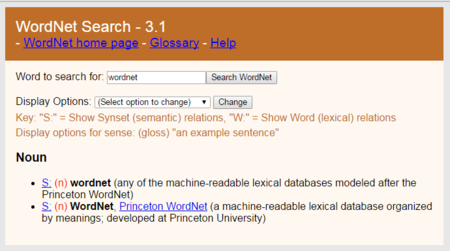Wordnets and what they can do for minority languages
What is a wordnet?
A wordnet is essentially a database consisting of elaborate and extensive graphs that represent the lexicon of a language. Although they bear resemblances to each other on a surface level, wordnets and thesauruses are two distinct databases. A wordnet not only creates a connection between word forms based on their meanings but also categorises words by label by the specific semantic relations that ambiguate them. Nouns, verbs, adjectives and adverbs are classified into groups of ‘cognitive synonyms’ or synsets. These are then linked via their lexical relations, which can be narrowed as hyponyms and hypernyms. Another distinctive feature of wordnets are that they’re completely machine readable and are of great use when building other lexical or linguistic resources.

The Princeton WordNet
The first wordnet was the Princeton WordNet (PWN) created for the English language by Princeton University. The initiative to create a lexical database based on semantic relations was born from discoveries regarding semantic relations made in a previous project to expedite vocabulary acquisition. As the first and most developed wordnet the PWN has been used as a model for a countless amount of smaller wordnets in many different languages.
The importance of wordnets to minority languages
What makes wordnets distinct is that they’re made to be completely machine readable. They’re made to facilitate automated tools which create automated content. Wordnets have been highly beneficial in the development of language resources and technologies since their creation. Wordnets hold a unique significance to the digitisation of minority languages. As of recent decades a priority has been given to online visibility by minority language activists and experts. The idea procured by mathematical linguist András Kornai that a language’s survival relies heavily on its “online visibility” is only proven more true to us by the day. Kornai speculates that unless a language is used conscientiously on the internet on a regular basis that it is disposed to losing ground in its estimated relevance by its prospective speakers and thus quickening its extinction. Most minority languages lack the full lexicon to facilitate contemporary terminology, which can be seen by speakers as an impediment to effective language usage.
Wordnets are an incredible facility for minority languages both in the preservation of vocabulary and for developing tools for examining the lexical relations within a language or between languages. They have proved to be an invaluable tool for developers of minority language technologies in their effort to keep up with the technological endeavours of majority languages that keep them alive.
Make sure to read the next blog post here to take a look into an example of a minority language wordnet!
References
Kornai, András. “Digital Language Death.” PLoS ONE, edited by Eduardo G. Altmann, vol. 8, no. 10, Oct. 2013, https://doi.org/10.1371/journal.pone.0077056.
Miller, George A., and Christiane Fellbaum. “WordNet Then and Now.” Language Resources and Evaluation, vol. 41, no. 2, 2007, pp. 209–14, www.jstor.org/stable/30200582?seq=1. Accessed 4 Jan. 2024.
Princeton University. “About WordNet.” Princeton.edu, 2010, wordnet.princeton.edu/.
I wonder how much work goes into creating a website this excellent and educational. I’ve read a few really good things here, and it’s definitely worth saving for future visits.